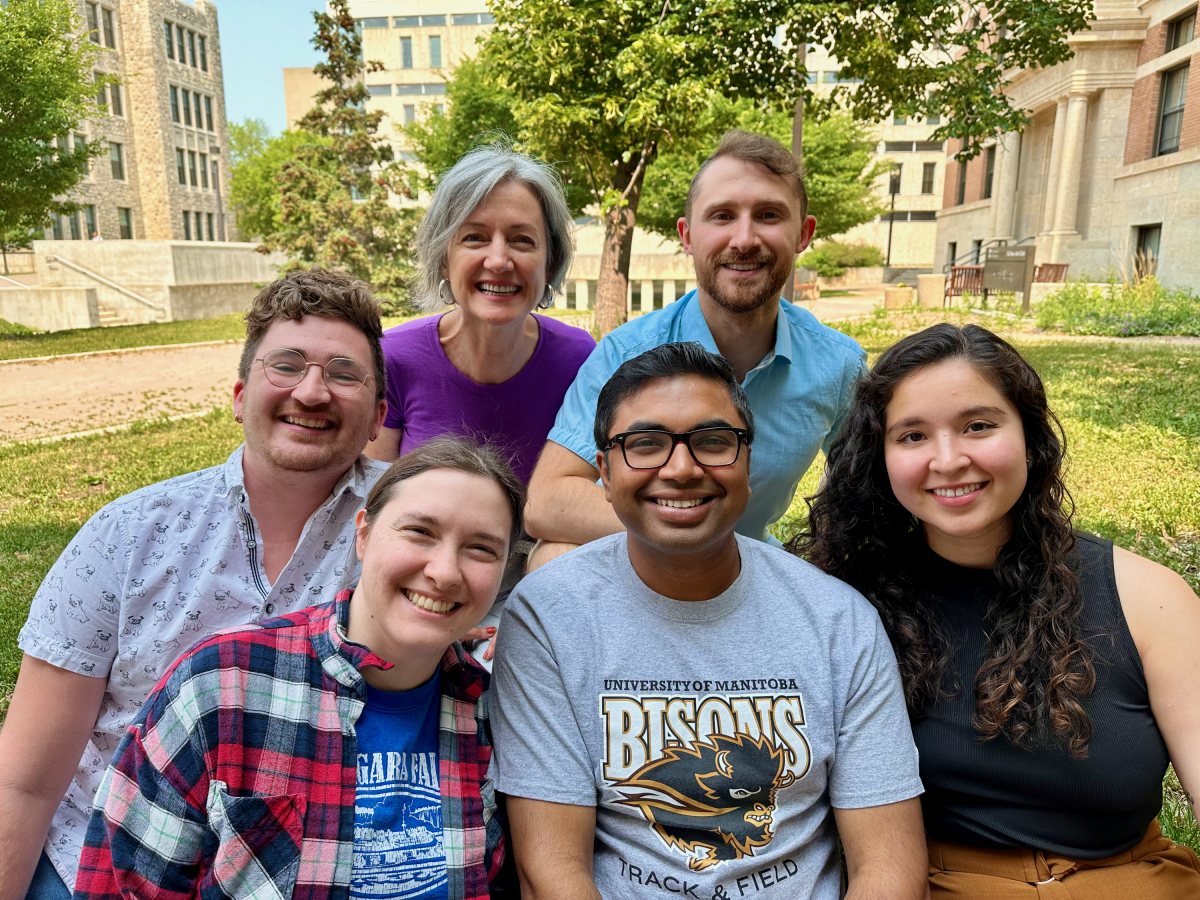
Top (from left to right) Silvia Cardona – Andrew Hogan Bottom (from left to right) Dustin Maydaniuk – Anna Motnenko – Zisan Rahman – Zayra Batún.
Can we improve antibiotics against superbugs?
Exploring New Strategies for Burkholderia cepacia Complex Infections.
Yes, we are talking about superbugs. But probably way smaller in size than what you have in mind. This superbug is a bacteria and researchers in the Faculty of Science have looked into its resistance to antibiotics. And their research will save lives! Join us as we talk with Silvia Cardona, professor and associate head graduate at the department of microbiology on their recent paper published in Nature Communications called “Profiling cell envelope-antibiotic interactions reveals vulnerabilities to β-lactams in a multidrug-resistant bacterium.”
1. Congrats on your recent paper published in Nature Communications. Can you briefly walk us through the main findings of this paper and how you see your research impacting the future of antibacterial therapies?
Thank you, we are thrilled to share the results of our work. This story is about a superbug, Burkholderia cepacia complex. These bacteria are very resistant to antibiotics because of their unique cell envelope characteristics. We wanted to explore whether there are vulnerabilities in that structure that can be exploited to improve the action of antibiotics. We then decided to explore every gene in the genome of these bacteria. We made thousands of DNA-barcoded mutants with a method called BarSeq, which allows us to grow the mutants together in the presence of antibiotics and study their response using next-generation sequencing. We found that many cell envelope functions are connected by a molecule called undecaprenyl phosphate. When this molecule is disrupted, bacteria become more susceptible to beta-lactams, one of the most common antibiotics currently used. Following that line, we explored chemical-genetic and antibiotic combinations that can be used with beta-lactams to extend their utility. It was exciting to provide an example of basic science that can have direct implications for treating antibiotic-resistant infections!
2. What inspired you and your team to research Burkholderia cepacia complex in regard to multidrug-resistant infections?
I was first curious about opportunistic bacteria, characterized by their ability to jump from their natural environment (soil and water) to infect diverse hosts, including humans. Then I learned how serious these bacterial infections are for people living with the genetic disease cystic fibrosis. Thanks to interactions with the cystic fibrosis community through Cystic Fibrosis Canada, I realized I needed to address the lack of antibiotics for Burkholderia cepacia complex. Working with non-model organisms is challenging, but I am committed to it!
3. What was the most significant challenge you faced when conducting your research? How did you overcome it?
The most significant challenge was to “think big” (not one gene but 8,000 genes!) while staying realistic about what I could achieve. Overcoming this challenge is an everyday task, and the only way I am doing it is by relying on the people that work with me to achieve success.
4. To have a successful paper with multiple authors means that the team works in great harmony together. As the leader in the Cardona Lab, how did you make sure the environment was supportive and everyone had the opportunity to grow?
Yes, that is so important! First, every team member shares a passion for research and is willing to go the ‘extra mile ’to achieve their project goals within the primary research idea. Second, everyone is free to choose their path, plan their experiments, and fail many times until they succeed. Finally, we celebrate everyone’s personal success by encouraging acknowledgment of team contribution. Nobody can do this alone!
5. What advice would you give to young researchers who are interested in antibacterial research?
First, get curious about how antibiotics work and why they sometimes fail; second, find joy experimenting with bacteria even when you will be tricked by them; finally, know that your research can and will save lives!
To learn more about Cardona’s work, you can check out Cardona Lab and their recent paper in Journal Nature Communications.






